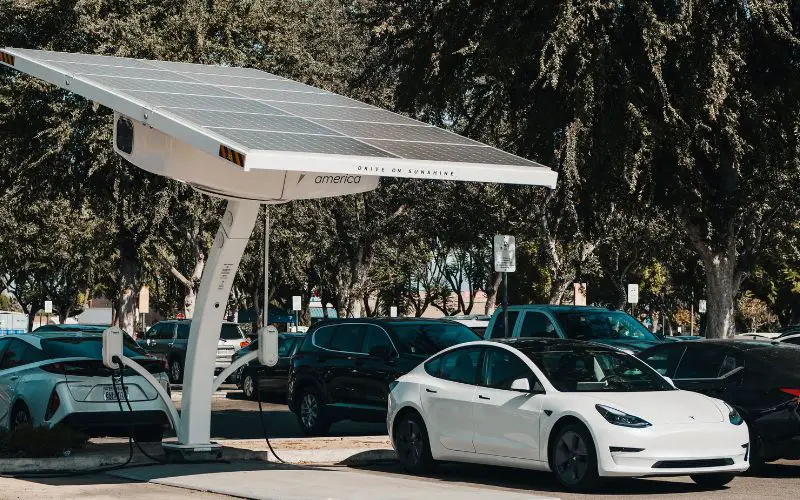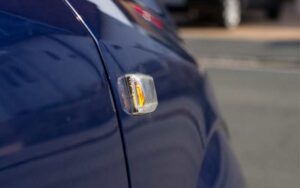Tesla Cabin Overheat Protection: All You Need To Know!
Last updated on September 12th, 2023 at 03:04 am
Cabin overheat protection is a very important feature that comes with most models of Tesla cars.
It is usually normal for cars to overheat when left under the sun for too long; this is where the cabin overheat protection comes in.
However, many people aren’t sure what cabin overheat protection means and how it works. Let’s discuss that.
Cabin overheat protection is a feature that comes with most vehicles and helps prevent the interior of a parked car from getting very hot. Some sensors and systems can easily detect rising temperatures and cool the cabin to keep the temperature in check.
In this article, we will tell you about the benefits of cabin overheating protection, and when you need to use it, please stick with us!
What Is Cabin Overheat Protection in a Tesla?

The cabin overheat protection in Tesla cars is a feature that prevents the interior surfaces from getting too hot.
When the interior of cars gets too hot, it can pose a threat to personal belongings, especially when you park your car in direct sunlight.
In most cases, this feature automatically begins its cooling process when the temperature of the Tesla cars goes beyond a certain limit; mostly when it reaches 104 degrees F.
Not only does this feature protect the cabins of Tesla vehicles, but it also ensures that every other touch area does not get too hot when you leave your car in direct sunlight.
Although sometimes this feature automatically activates, you can turn it on manually through the vehicle touch screen or the Tesla mobile app.
How To Turn on Your Tesla Cabin Overheat Protection?
You can use various methods to turn on your Tesla’s cabin overheat protection. The car’s touch screen and the Tesla mobile app are two common methods.
To use the car touch screen, follow the instructions below:
- Tap on controls, and then safety, then the cabin overheats protection.
- You will then be presented with two options; ON and NO A/C.
- Tap on ON if you want the air conditioning to operate automatically when the cabin temperature reaches 104 degrees F.
- Tap on NO A/C if you want only the fan to operate to prevent touch surfaces from getting too hot.
To use the Tesla app;
- Tap on CLIMATE.
- Swipe up from the bottom menu until you get to the setting options, then tap on cabin overheat protection.
If you set your cabin overheat protection to automatic, it may take up to 15 minutes to enable once you leave the vehicle.
The cabin overheat protection feature can run for up to 12 hours after it is enabled or until your battery runs down to 20%, depending on which comes first.
When Do I Need To Use Cabin Overheat Protection?
You must use Tesla cabin overheat protection whenever the car gets too hot, usually when the car’s temperature gets over 105 degrees F.
This protective feature usually works by automatically or manually cooling down the temperature of your cars whenever it gets too hot.
The Tesla cabin’s overheat protection works mainly on the car’s air conditioning unit.
This safety measure usually kicks in whenever the car reaches a temperature of 105 degrees, automatically cooling down the vehicle to prevent fire risks.
How Can You Protect Your Car From Overheating?
There are several ways you can prevent your Tesla cars from overheating, some of which are stated below:
- Turn off the air conditioning when you are not in the car; doing this reduces the load on the AC, improving your engine health.
- Ensure you do not park your cars under direct sunlight, as the sun can contribute to its overheating.
What Is the Benefit of Cabin Overheat Protection?
There are a lot of benefits that come from using the Tesla cabin overheat protection.
Some of these are stated below:
#1. Comfort
It is very uncomfortable being in a hot car, and that is a fact. With Tesla cabin overheat protection, your Tesla cars’ internal temperature is improved, enhancing comfort.
#2. Safety
When the temperature of cars is too high, greater fire risks are attached. When the temperature of the interior of the cars gets too high, the car becomes susceptible to burn injuries.
With cabin overheat protection, you can prevent sun injuries and protect personal items like your phones from damage from heat.
#3. Safety Of Your Pets
Aside from protecting your gadgets and car, the cabin overheat protection helps protect your pets from the heat from the Tesla.
If you know you want to turn on the cabin overheat protection for your pet, it is advisable to turn on pet mode too.
As much as there are benefits, there are also a few disadvantages of using cabin overheat protection. Some of these cons include;
#4. Reduced Car Energy
Using the cabin overheat protection usually requires energy from your battery, and if it keeps running for too long, your battery’s energy will be greatly reduced.
#5. Increased Energy Usage
Since the cabin overheat protection uses too much energy, the efficiency of your vehicle reduces, which in line, reduces its range.
#6. Potential System Failure
When this feature is overused, it could lead to a potential system failure, a situation where this feature and several other features of the car do not work properly or don’t even work at all.
Also, more heat is introduced to the car when the system fails, and if you have pets in there, it would be very dangerous for them.
That is why it is advisable that you activate dog mode or keep mode whenever you are leaving the car and you have pets in there.
Below is a tabular description of the pros and cons of Tesla overheating protection:
| Pros | Cons |
|---|---|
| Prevent battery damage | Reduction in battery efficiency |
| Improves safety of the occupants and gadgets | Reduces the range for smooth driving in hot weather |
| Maintains top performance of the Tesla cars | Possible reduction in power temporarily |
| Minimizes the risk of thermal incidents | Additional complexity in the vehicle system |
Does Tesla Frequently Overheat?
Like most cars, Teslas overheat when exposed to direct sunlight for a long time.
At certain times of the year, the heat rises to excruciatingly high temperatures, hence, the frequent overheating of the Tesla cars.
It is also advisable to carefully handle your Tesla cars during periods like this to prevent fire risks.
Some common mistakes you should not make when you expose your Tesla car to very hot weather conditions include:
#1. Charging Your Cars
If you decide to charge your Tesla car when it is already overheating, it would indirectly reduce the efficiency of your Tesla vehicle by weakening the car battery.
If a car’s battery starts to cool down, the internal resistance also begins to increase, the same way the car’s resistance decreases when the car is overheated.
When your Tesla car has low resistance, it makes it easier for the battery to reduce inefficiency faster, and charging your car at that time only worsens it.
#2. Leaving Electronic Devices Inside
When your Tesla is parked under the hot sun, you should ensure that you do not have any electronic devices inside the car.
The harsh sun rays and the very hot temperature inside the Tesla cars would contribute to ruining your smartphones, as most electronic devices cannot resist high temperatures.
#3. Parking In High-Temperature Areas
Parking your cars in shady areas would aid in directly stopping Tesla cars from overheating.
If there is a shady spot where you can park your Tesla cars aside from under the sun, ensure you go for it.
#4. Leaving the Windows of the Car Partially Open
Leaving the windows of your car open or partially open can contribute to having a very hot Tesla car.
When you do this, hot air is trapped inside the car, making it even hotter when the windows are finally wound up.
FAQs
What Does Cabin Overheat Protection Mean?
Cabin overheat protection usually works by preventing the cabins of Tesla cars from getting too hot when exposed to a hot temperature.
Does the Cabin Overheat Protection Work?
Yes. The Tesla cabin overheat protection works to keep Tesla cars safe from the damage caused when exposed to direct sunlight. You can change the cabin protection settings from automatic to manual from the Tesla settings or the Tesla mobile app.
What Should the Cabin Overheat Protection Be Set At?
Ensure that you set the threshold between 90-100 degrees F. Setting the threshold lower than that would threaten your belongings in the car, and it might also result in your overheating protection not working properly.
What Is Cabin Air Control?
The cabin air control works by cleaning the air before it enters the car by heating it, ventilating it, and then triggering the air conditioning system.

Hey, I’m Michael Davis, a 35-year-old with a degree and a love for cars and tech. Since I was a kid, cars have been my thing—so much that I even thought they ran on magic beans! Fast forward, and I’ve built Vehicle Army, your one-stop-shop for easy-to-understand car facts.







